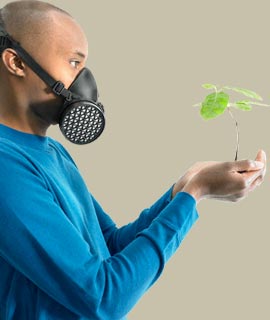Safety Tips

Cylinders For Compressed Gases
High pressure Gas cylinders are made from steel and aluminium alloys and are fitted with valves. The gas contents are identified by a system of colour coding, stenciling and adhesive labels. In every cylinder following information is marked by permanent stampings:-
• Filling Pressure
• Serial Number
• Test Pressure
• Name of the manufacturer & country of origin
• Date of previous pressure testing and/or inspection with the stamps of the concerned authorities
• Stamp of official authority
These marks should not be removed or defaced from the cylinder as otherwise cylinders would not be filled.
Cylinder Storing
The storage of cylinders is governed by the National Fire Protection Association (NFPA). Local codes also apply. The codes governing the storage should be maintained at all locations. Compressed gases should follow specific storage guidelines.
Cylinder Handling
Cylinders must be handled most carefully. Mishandling may cause a damaged valve or ruptured cylinder could expose personnel to the hazards associated with these gases. The personnel responsible for the receiving of cylinders should inspect cylinders externally before moving them to the point of use or to the storage area. Personnel should be equipped with the necessary safety equipments as required for various types of gases.
Valve Operation
By maintaining a few simple rules at the time of opening and closing of valves can prevent damage to valves and add years of service life to the valves.
Compressed Gases |
|
| • Non Flammable, Non Toxic & Low Toxicity Compressed Gases- | |
| • Air • Argon • Banana Gas 32 • Carbon-Di-Oxide • Helium • Krypton • Neon • Nitrogen • Nitrous Oxide • Oxygen • Xenon |
These gases should be stored in well ventilated areas or in covered outdoor areas, keeping them off the ground and away from radiant heat sources. Temperature of cylinders should not exceed 52° C.These gases could be safely stored together with Toxic and /or Corrosive, nonflammable products. |
| • Flammable, Non-Corrosive & Lox Toxicity Compressed Gases- | |
| • Acetylene • Butane • Ethane • Ethylene • Hydrogen • Methane • Propane |
These gases should be stored in well ventilated areas equipped with electrical equipment in accordance with Article 500 of the National Electrical Code. These gases may also be stored in covered outdoor areas, but should be kept off the ground and away from the radiant heat sources. The combustible materials and all ignition sources should be kept out of the storage area. The cylinder temperature should be kept within 52° C. These gases could safely be stored together with Flammable, Corrosive, and/or toxic products. |
